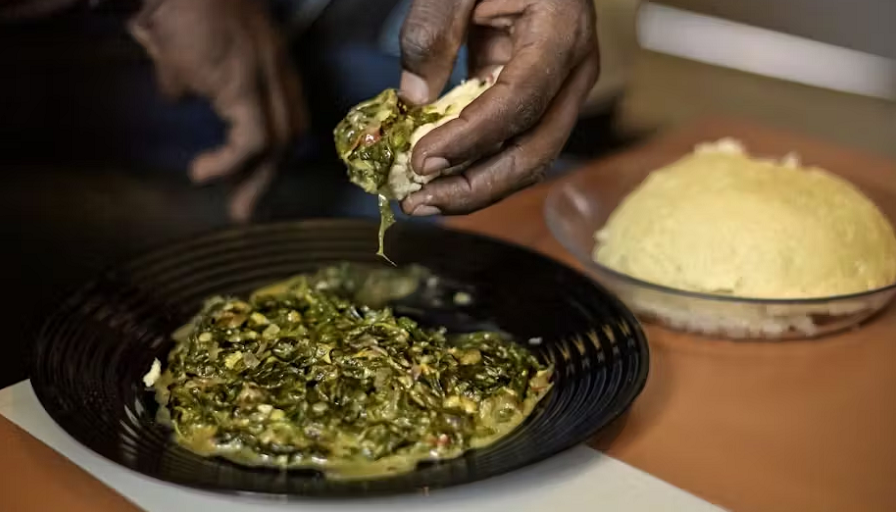
Have you ever taken a bite of a dish and been transported back in time to a childhood memory or a family gathering? Food has an incredible ability to connect us to our past. Around the world, cuisine acts as a culinary bridge to our ancestors, rich with history and stories. Here we look at the significant role food plays not just in sustaining us physically, but also in nourishing our historical and cultural identities.
Contents
The Recipe Book: A Time Machine
Old family recipes are like time machines. Passed down through generations, they offer a delicious journey into the past. When Grandma hands you a well-used recipe card, she’s giving you more than a way to make her famous apple pie. She’s offering a piece of history, infused with the flavors of her childhood and her mother’s before her. For many families, these recipes are sacred artifacts, cherished for both their taste and the memories they evoke.
In many cultures, recipes are dutifully preserved and handed down with great care. Consider the process of making tamales in Mexican families or pasta from scratch in Italian households. Each step in the process is a tradition of its own. By cooking these dishes, we engage in the same culinary traditions that our ancestors experienced, fostering a connection that is both emotional and historical.
Flavorful Stories Through Genealogy
Genealogy, the study of family ancestries and histories, can provide fascinating insights into how food has traveled through time and geography to arrive on our modern plates. Each dish has its roots in various geographic regions and periods, influenced by the migrations and movements of people. When we explore our family trees, we often uncover the origins of beloved family recipes.
Imagine tracing your ancestry back to a small village in India or a coastal town in Spain. This not only gives you a geographic context for your heritage but might also explain why certain ingredients or cooking methods have lingered in your family’s cooking traditions. Understanding these connections can deepen your appreciation for the meals that have been part of your family for generations.
Food as a Cultural Bridge
Food does more than just connect families; it serves as a cultural bridge, linking communities and encouraging the exchange of traditions. In diverse societies, this exchange is particularly evident in the fusion of flavors and cooking techniques. Dishes such as ramen from Japan or couscous from North Africa have crossed borders and taken on new forms, adapting to local tastes while still holding on to their heritage.
The global exchange of recipes and ingredients often reflects the history of trade and exploration. As travelers introduced new spices and foods to different lands, these ingredients found their way into traditional dishes, resulting in the vibrant, multicultural cuisines we enjoy today. These dishes tell stories of exploration, conquest, and cultural blending, reminding us of our shared human history.
The Role of Rituals in Culinary Heritage
Culinary rituals and traditions are often tied to significant cultural or religious events. Think about the preparation of a feast for Thanksgiving in the United States or the meticulous making of mooncakes for the Chinese Mid-Autumn Festival. These rituals have been passed down through generations, each one reinforcing community bonds and cultural identity.
Food rituals can vary greatly from one culture to another, but they all share a common purpose: to bring people together in celebration, reflection, or remembrance. In this way, such traditions are more than mere habit; they are integral expressions of culture and history, teaching us values and traditions while preserving a sense of identity.
Preserving and Sharing Culinary Knowledge
In an era of fast-paced life and instant meals, the art of preserving and sharing culinary knowledge has become more critical than ever. Initiatives such as community cooking classes and online recipe-sharing platforms play an essential role in keeping these traditions alive. By teaching the next generation how to make ancestral dishes, we ensure that our culinary heritage is not lost over time.
Efforts to document and record recipes also contribute to preservation. Imagine a digital library of recipes from around the world, each one tagged with its cultural significance and historical background. Not only would this provide a wealth of delicious knowledge, but it would promote cultural understanding and respect.
Cooking as a Connection to Ancestors
When we cook, we often do so with the memory of someone who taught us the way or with a nod to our family’s traditions. This experience is more than just preparing food; it is a way to connect with our ancestors. Every fold of a dumpling or stir of a pot might echo what our grandparents once did, and what theirs did before them. This continuity offers a comforting reminder that, regardless of where we are, we are part of a timeless human experience.
Cooking can become an intimate dialogue with those who have passed, allowing us to celebrate their lives and hold their memories close. In this sense, food becomes a language of its own, one that speaks directly to the heart across time and distance.
The Future of Food Heritage
Looking ahead, our approach to food heritage will likely continue to evolve with changing environments, tastes, and technologies. Global warming and its impact on agriculture could alter the availability of certain ingredients, challenging us to adapt traditional recipes. At the same time, technology offers ways to revive lost traditions and engage in new culinary experiments.
By continuing to value and explore the links between food and heritage, we ensure that future generations can enjoy the rich tapestry of flavors and stories that make up our culinary landscape. Each dish, whether an ancient favorite or a modern twist, serves as a testament to the enduring power of food to connect us with our past and each other.

